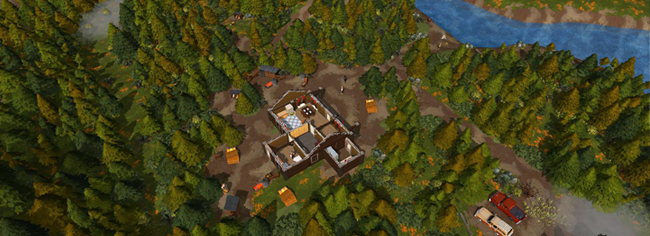Dead Strains (2014)

Project Description
– Game: Commercial Standalone PC-Game
– Genre: Single-player Sandbox Zombie Apocalypse
– Development Time: 7,5 months.
– Team size: 2 Programmers, 2 Artists, 1 Level Designer
My Responsibilities
– All Level Design.
– Level Production from blockout to dressing.
– Scripting gameplay.
– Scripting tools.
– 3D-Dummy object creation.
Description
Players controls mad scientists whos goal it is to eradicate all of mankind with his genetically modified Zombie virus. As the player progresses through the game she/he can alter the specifics of the virus to enhance her/his undead hordes with special abilities.
[wpsgallery]
Control the pandemic!
Here you can look at the current state of the world like seeing how the zombie influences is spreading throughout the world map Survivors are less likely to manage to reach safety in an area under zombie control. The collections of red dots are zombie herds that you can command towards tough to crack targets. And the yellow C are caravans with people resources and knowledge that the instances uses to communicate with by disrupting them with your herds you can effectively starve out a town. Moving herds and intercepting caravans takes time during which new caravans will appear, more knowledge will spread and humans will have more time to fortify. The time spent in the world map is executed in real time. And during this time your research and DNA splicing is taking place. A lot like in XCOM’s base.

Splice DNA in the Lab
You enter the lab to setup your new strains before launching your next attack. The lab is where you splice DNA to put together your unique zombie strains.
Depending on what DNA sequences you combine together your zombies will gain different abilities. This is important to keep the humans on their toes as they will quickly defeat you once they understand the threat. By researching and creating new abilities for your zombies the game will ever change and you have the possibility to keep the humans on their toes and even spread misinformation by training them to believe something and then change your zombies so that what they believed to be true is now false.
Level Creation
The production of the levels in Dead Strains has been a trial and error experience. The project was kicked-off as my internship started and there was no foundation in terms of code or gameplay, which put me in a challenging position – designing levels for a game that had no clear view on what its gameplay would look like. A couple of months in we finally got some basic gameplay going and at that point I realized that I had to scrap and rebuild all the levels that I made so far. Due to the complexity of the data-driven foundation and constant additions of new components to the game the scrap and rebuild iteration-style has been around during the whole development time of the project.
Another challenge we faced was the scale of the levels, without being able to test the game it was extremely hard to say how much space was needed. As a consequence of that I had to scrap huge parts of the maps I already built earlier during the project, all of them were way to big and I had to cut up to 40-50% of initial map size. This taught me a valuable lesson about building levels without a proper gameplay scale reference. To make things more clear for myself and others I divised three level block-out methods:
Hatching Method
When using this method, you start out building on many different places all over the estimated map size and try to fill out the whole level at once. This was how I started creating the levels and it proved to be ineffective and clumsy. The two biggest problems with this method are: (1) that it tends to have no coherency between the scenes in the level and (2) it creates a lot of gameplay void (read empty spaces.)
Mass Expand Method
The first thing you do if you use this method is picking a couple of different places in the level and build scenes separate from eachother and expand them to the point where you can connect them to the surrounding scenes. This method proved to work a lot better than the Hatching Method, especially on the Farmland level in which each farm was a self-contained gameplay area.
Single Expand Method
Using this method you will pick one point on the map and expand from it until a plausible map size is found. Building levels this way proved to give the best coherency and is now the method I prefer, though for some maps the Mass Expand Methods might still be more suitable.

Scripting and Tools
During the project I have been scripting a lot, everything from zombie abilities to trip-mines and editor tools. My time at Defrost Games has been very educational in terms of coding, I learned to work alongside programmers and earned a lot of know-how, especially on where in the code I should and should not poke around.

A term I learned during my work, was Decorator, which in essence is a self-contained script that you hook up on something else. Most of the scripts that I wrote for gameplay were Decorators. This is because if I write self-contained code it is much less likely that it can damage or interfere with other code components, and in the case it would cause a hustle it is easily removed.